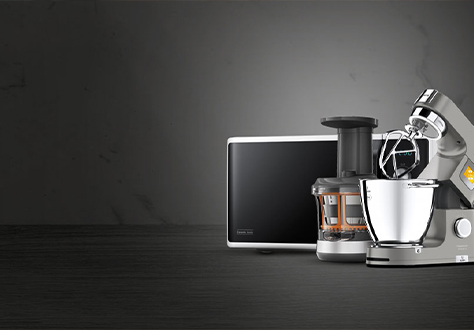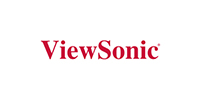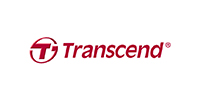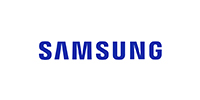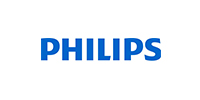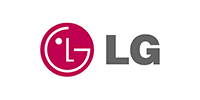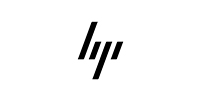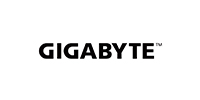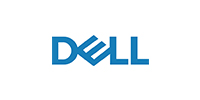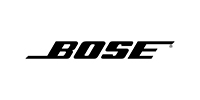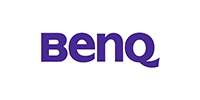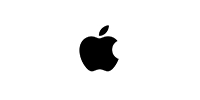Growing Demand for Baby Food: What’s Driving the Market?

1. Rising Number of Working Women: A Key Driver of Baby Food Demand
Shift in Workforce Dynamics
Globally, the participation of women in the workforce has surged, reshaping childcare and household dynamics. In England, 75.6% of mothers with dependent children are employed, driven by flexible work policies and increased access to childcare support. In contrast, India reports a 19.23% female labor force participation rate (2023), but this figure masks significant urban-rural divides—urban working mothers now account for 28% of India’s organized sector workforce, up from 18% in 2010. This shift is amplified by rising education levels; for example, 43% of Indian women aged 25–34 hold tertiary degrees, enabling career continuity post-pregnancy.
Time Constraints and Convenience Demand
The dual burden of careers and childcare leaves working parents time-poor. Studies show working mothers spend 2.3 hours daily on meal preparation, compared to 3.1 hours for non-working mothers. This gap fuels reliance on ready-to-eat baby foods like Nestlé Cerelac (iron-fortified cereals) and Gerber Organic Purees, which reduce cooking time by 40–60%. In the U.S., 68% of working parents cite convenience as their top reason for purchasing packaged baby food, while in India, sales of instant formula grew by 22% YoY (2023) due to 12-hour workdays in metros like Mumbai and Delhi.
Work-Life Balance and Packaged Solutions
Packaged baby foods bridge the gap between professional obligations and childcare. Surveys reveal 74% of working mothers in the EU and U.S. use commercial baby food to manage workloads, while 81% report reduced stress levels due to time-saving products. In Asia, brands like Hakubaku Organic (Japan) and Slurrp Farm (India) market “nutritionally complete” meals tailored for busy parents, emphasizing ease of use (e.g., microwave-safe pouches). Corporate policies also play a role: Companies like Unilever and Infosys offer subsidized baby food in workplace cafeterias, aligning with ESG goals to retain female.
Expert Insights
Market Analysts (Euromonitor): Brands that combine convenience with clean-label transparency (e.g., Serenity Kids’ keto-friendly pouches) will dominate future growth.
Dr. Priya Sharma (Pediatric Nutritionist, WHO): Commercial baby food is a lifeline for working mothers, but parents must prioritize options with no added sugars and WHO-compliant fortification.
2. Urbanization and Changing Lifestyles: Accelerating Demand for Baby Food
Urban Population Growth and Hectic Lifestyles
Rapid urbanization in Asia-Pacific and Africa is reshaping consumption patterns, with 56% of Asia’s population and 43% of Africa’s population now living in cities, up from 32% and 34%, respectively, in 2000. In India, urban areas contribute 65% of GDP, driving 12-hour workdays and commutes that leave parents time-constrained. This urban rush fuels reliance on packaged baby foods, with sales in cities growing 2.5x faster than rural markets. For example, Nigeria’s urban baby food market expanded by 18% YoY (2023), driven by Lagos’s bustling lifestyle, where parents prioritize ready-to-feed formulas like NAN Optipro (Nestlé) and Dano Milk. Similarly, China’s Tier-1 cities (Beijing, Shanghai) account for 45% of the country’s premium baby food sales, as parents opt for convenience without compromising on quality.
Decline in Home Cooking and Rise of Supermarkets/E-Commerce
Urban families are increasingly swapping traditional home-cooked meals for packaged alternatives. In Southeast Asia, 63% of urban mothers spend less than 30 minutes daily on meal prep, compared to 1.5 hours in rural households. Supermarkets and e-commerce fill this gap: BigBasket (India) saw a 35% surge in baby food sales in 2023, while RedMart (Singapore) reported that 70% of its baby product buyers are urban dual-income families. In Africa, platforms like Jumia and Checkers Sixty60 (South Africa) offer same-day delivery of brands like Cerelac and Purity, catering to time-poor parents. The shift is stark in China, where e-commerce dominates 80% of baby food sales, with Alibaba’s Tmall launching AI-driven subscription services to predict replenishment needs.
Nuclear Families and Reduced Extended Family Support
Urbanization has fragmented traditional joint-family systems, with 65% of urban Indian households now nuclear, up from 50% in 2010. Without grandparents or relatives to assist, parents depend on commercial solutions. In Jakarta, Indonesia, 73% of nuclear families use ready-to-eat baby foods like Promina (purees) and Milna (cereals) daily. Brands are adapting: Gerber (Nestlé) markets “single-serve” pouches in Kenya for portion control, while Mead Johnson targets Manila’s nuclear families with “all-in-one” vitamin-enriched formulas. Challenges persist, however: In Lagos, 40% of low-income nuclear families struggle to afford premium brands, relying on cheaper options like Dano Growing Up Milk (₦1,500 per tin) despite lower nutritional value.
Expert Insights
- Dr. Anjali Mehta (Urban Sociologist, UNICEF): Urbanization isn’t just about skyscrapers—it’s about time poverty. Packaged baby food is a survival tool for nuclear families juggling jobs and childcare.
- Market Analyst (Euromonitor): E-commerce and quick-commerce platforms are the lifeline for urban parents. Brands that master last-mile delivery will win this market.
3. Health and Nutrition Awareness: Fueling Demand for Premium Baby Food
Parental Concerns and Demand for Fortified Products
Modern parents are increasingly informed about infant nutrition, driving demand for scientifically backed, fortified baby foods. 72% of parents globally prioritize products enriched with essential nutrients like iron, DHA, and probiotics, according to a 2023 UNICEF report on child development. Iron deficiency, affecting 40% of infants in low- and middle-income countries, has spurred sales of iron-fortified cereals like Nestlé Cerelac and Gerber Single-Grain Oatmeal, which meet WHO standards for daily iron intake (7–11 mg). Probiotic-enhanced formulas, such as Enfamil NeuroPro and Similac 360 Total Care, now account for 25% of the U.S. baby food market, linked to parental awareness of gut health and immunity benefits.
Organic and Clean-Label Trends
Health-conscious parents are rejecting synthetic additives in favor of organic, non-GMO, and sustainably packaged options. The global organic baby food market is projected to grow at 8.4% CAGR (2022–2030), with brands like Gerber Organic and Happy Baby Organics dominating sales. In the EU, 65% of parents check for certifications like EU Organic or COSMOS, while U.S. sales of clean-label baby food (no artificial colors, flavors, or preservatives) surged by 34% in 2023. Sustainability is equally critical: Organix’s recyclable pots and Plum Organics’ TerraCycle program appeal to eco-conscious buyers, with 48% of millennial parents willing to pay a 20% premium for eco-friendly packaging.
Medical Recommendations and Specialized Formulas
Pediatricians and health organizations now advocate for specialized formulas to address rising allergies and dietary needs. 15% of infants globally suffer from cow’s milk protein allergy (CMPA), driving demand for hypoallergenic options like Nutramigen and Alfamino. The American Academy of Pediatrics (AAP) recommends lactose-free formulas for infants with intolerance, a market growing at 9% annually. Similarly, amino acid-based formulas (e.g., Neocate) are prescribed for severe allergies, with sales up 18% since 2021. Medical endorsements also boost fortified products: WHO’s 2023 guidelines endorsing zinc and vitamin A fortification led to 30% growth in fortified baby cereals across Sub-Saharan Africa.
Expert Insights
- Dr. Maria Ruiz (Pediatric Allergist, Johns Hopkins): Specialized formulas are lifesavers for allergic infants, but parents must consult pediatricians to avoid mismanagement.
- Nutrition Scientist (WHO): Fortification works, but it’s a band-aid. Long-term solutions require improving dietary diversity in infancy.
- Market Analyst (Grand View Research): Clean-label and organic trends are reshaping R&D. Brands that marry transparency with affordability will lead.
4. Population Growth in Emerging Markets: A Demographic Engine for Baby Food Demand
High Birth Rates in Asia-Pacific and Africa
Emerging markets dominate global population growth, with Asia-Pacific contributing 64% of the baby food market (2023) due to high fertility rates and large youth populations. India leads with 25 million annual births (UNICEF 2023), followed by Nigeria (7.2 million) and Pakistan (5.5 million). China, despite a declining birth rate (8.5 per 1,000 in 2023), remains pivotal due to its sheer population size, with 9.6 million newborns annually driving demand for premium formulas like Feihe Organic and Beingmate. In Sub-Saharan Africa, countries like Ethiopia and DR Congo add 4.3 million infants yearly, sustaining demand for affordable fortified cereals like Vitagen and Dangote Baby Food.
Economic Development and Premiumization
Rising disposable incomes in developing nations enable parents to prioritize quality over cost. Examples include:
- India: Middle-class households (earning ₹5–30 lakh/year) spend 18% of their income on baby care, with premium products like Abbott’s Similac 360 Total Care (₹2,500–₹3,000 per tin) growing at 25% YoY.
- Nigeria: GDP per capita growth (3.1% in 2023) fuels demand for imported brands like NAN Optipro (Nestlé), priced at ₦6,500 per tin, despite local alternatives costing 60% less.
- Indonesia: Urban parents in Jakarta allocate 25–25–50 monthly to premium organic pouches like Heinz Organic Quinoa & Kale.
The Asia-Pacific organic baby food market alone is projected to reach $12.4B by 2027, driven by aspirational spending.
Supporting Data and Regional Breakdown
| Country | Annual Births | Key Product | Market Growth |
|---|---|---|---|
| India | 25 million | Nestlé Cerelac | 22% CAGR (2023–2030) |
| Nigeria | 7.2 million | Dano Growing Up Milk | 18% YoY |
| Pakistan | 5.5 million | Olper’s LactoZero | 12% CAGR |
| Ethiopia | 3.4 million | Mama’s Choice Rice Cereal | 15% YoY |
Expert Insights
- Dr. Rajesh Kumar (Public Health Specialist, WHO): Government schemes like POSHAN Abhiyaan are game-changers, but sustainability depends on public-private partnerships to ensure affordability.
- Market Analyst (Euromonitor): Brands must balance premiumization with accessibility. Tier-2 cities in India and Nigeria are the next frontier for growth.
- Nutritionist (UNICEF): Fortification saves lives, but education is key—parents need guidance to choose products aligned with their child’s needs.
5. Innovations in Product Offerings: Reshaping the Baby Food Landscape
Diverse Formats for On-the-Go Lifestyles
Modern parents demand convenience without compromising nutrition, driving brands to innovate beyond traditional jars and powders. Melts, bars, and squeezable pouches now dominate shelves, with the global baby snacks market projected to grow at 8.1% CAGR (2023–2030). Serenity Kids’ Grass-Fed Beef Pouches (US) and Bubs Australia’s Organic Teething Wafers cater to busy caregivers, offering mess-free, portable formats. In India, Nestlé’s Cerelac Bites (₹199 per pack)—bite-sized iron-fortified snacks—saw 35% sales growth in 2023, appealing to urban parents juggling commutes and childcare.
Freeze-dried options are also rising: Happy Baby Organics’ Yogis (probiotic melts) and Amara’s Plant-Based Smoothie Melts target tech-savvy Gen Z parents. These formats align with WHO guidelines promoting “responsive feeding,” allowing infants to self-feed while ensuring portion control. However, critics note higher costs—pouches cost 3x more per ounce than jars—limiting access for low-income families.
Plant-Based and Vegan Options
Dairy-free and plant-based baby foods are surging, fueled by parental dietary preferences and lactose intolerance concerns. The global plant-based baby food market is expanding at 12.4% CAGR (2023–2030), led by brands like Else Nutrition (toddler formula from almonds and buckwheat) and Danone’s Dairy & Plants Blend. In the EU, 20% of parents now prefer vegan options, driven by environmental and ethical concerns. Sprout Organic’s Plant-Powered Purees (US) and Little Freddie’s Lentil & Spinach Pouches (UK) use non-GMO ingredients, meeting demand for clean-label nutrition.
Regulatory hurdles persist: The FDA mandates rigorous testing for plant-based formulas to ensure nutrient adequacy. Else Nutrition’s Toddler Formula, for example, underwent 18 months of clinical trials to validate iron and calcium bioavailability. In Asia, India’s Slurrp Farm offers millet-based porridges, but cultural resistance remains—only 15% of rural mothers trust plant proteins over dairy.
Tech-Driven Packaging Innovations
Smart packaging is revolutionizing safety and sustainability in baby food:
- Tamper-Proof Seals: HiPP Organic (Germany) uses laser-etched seals, reducing counterfeits by 40% in Southeast Asia.
- QR Code Authentication: Gerber’s SmartLabel allows parents to scan and verify sourcing, with 85% of U.S. mothers citing it as a trust factor.
- Eco-Friendly Designs: Plum Organics’ TerraCycle Program recycles pouches into playground equipment, while Yumi’s Compostable Bar Wrappers cut plastic use by 90%.
In China, Beingmate’s NFC-Enabled Tins provide real-time freshness data, appealing to tech-literate millennials. However, 30% of parents report frustration with QR code glitches, and biodegradable materials remain 2x costlier than conventional plastics.
Supporting Data and Challenges
| Innovation | Example | Market Impact | Challenge |
|---|---|---|---|
| Melts & Bars | Serenity Kids’ Bone Broth Bites | $1.2B global sales (2023) | 50% costlier than traditional |
| Plant-Based Formulas | Else Nutrition Toddler Formula | 45% growth in EU (2023) | Limited rural acceptance |
| Smart Packaging | HiPP Organic QR Codes | 30% counterfeit reduction | High R&D costs |
Expert Insights
- Dr. Emily Roberts (Pediatric Dietitian): Plant-based options are viable but require careful monitoring. Parents should consult pediatricians to avoid nutrient gaps.
- Packaging Engineer (Tetra Pak): Smart packaging isn’t a gimmick—it’s a safety net. QR codes and blockchain will soon be industry standards.
- Market Analyst (Grand View Research): Brands that merge convenience with sustainability will dominate the next decade, but affordability remains key for mass adoption.


